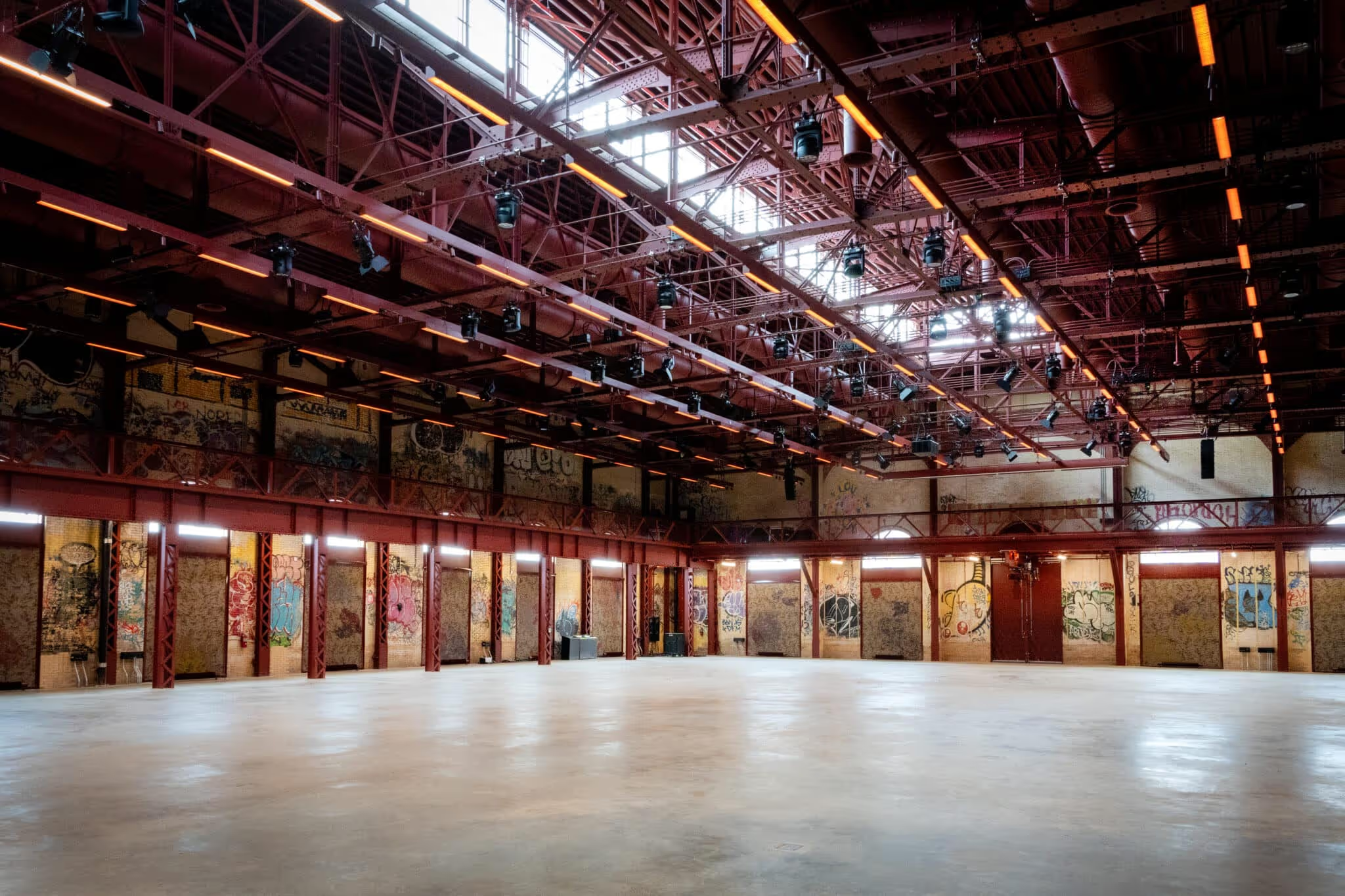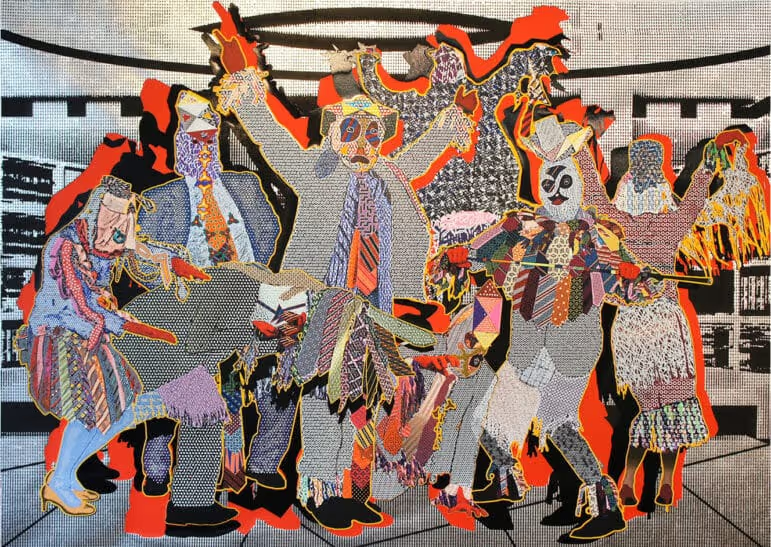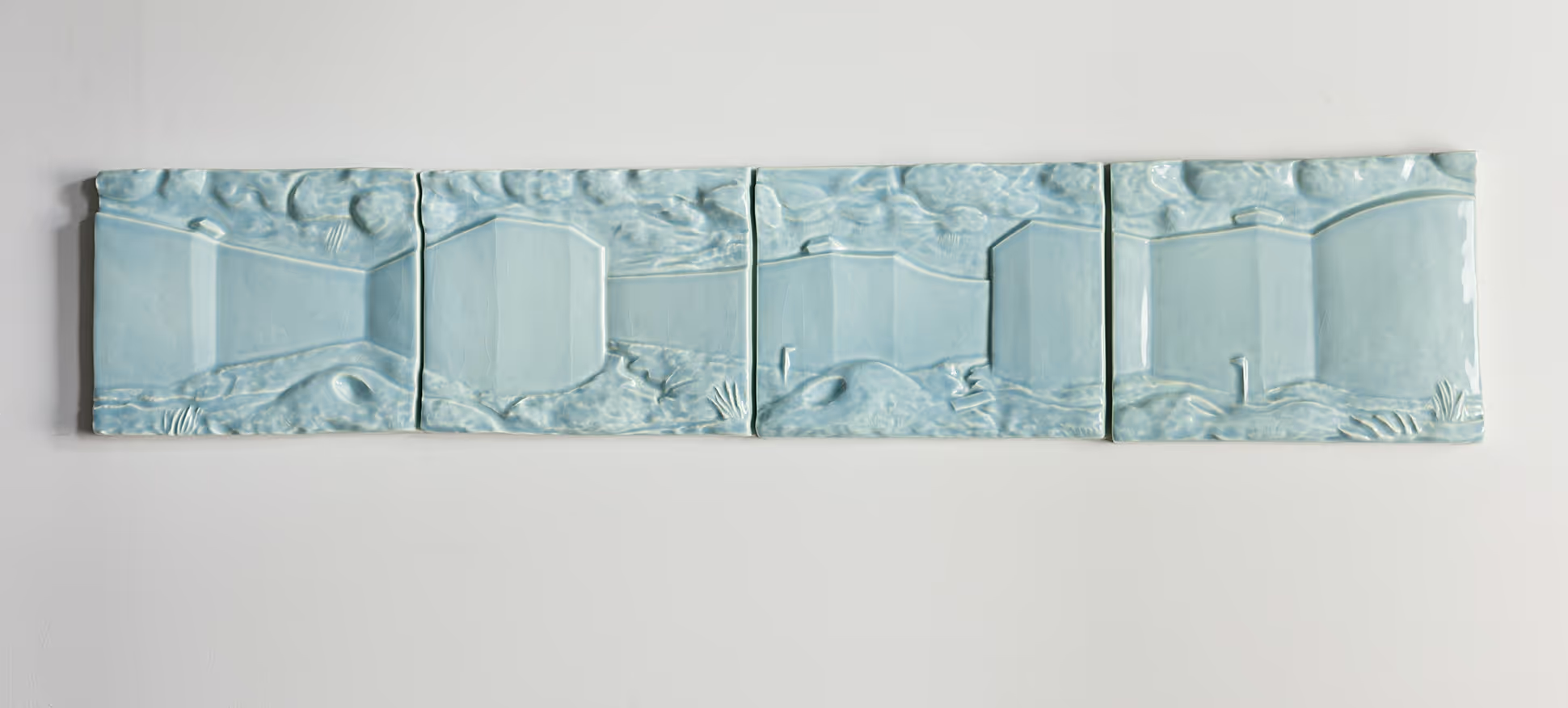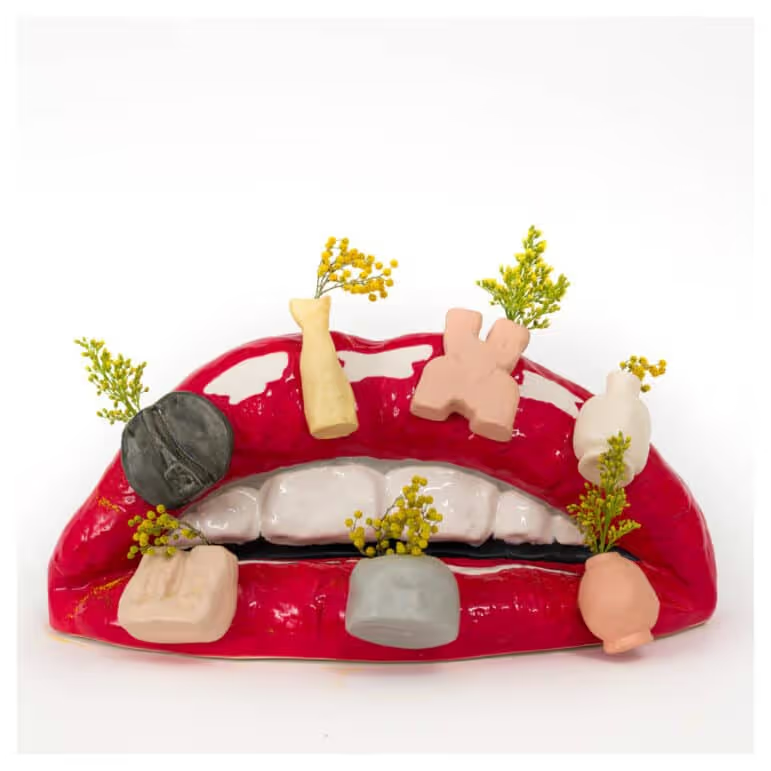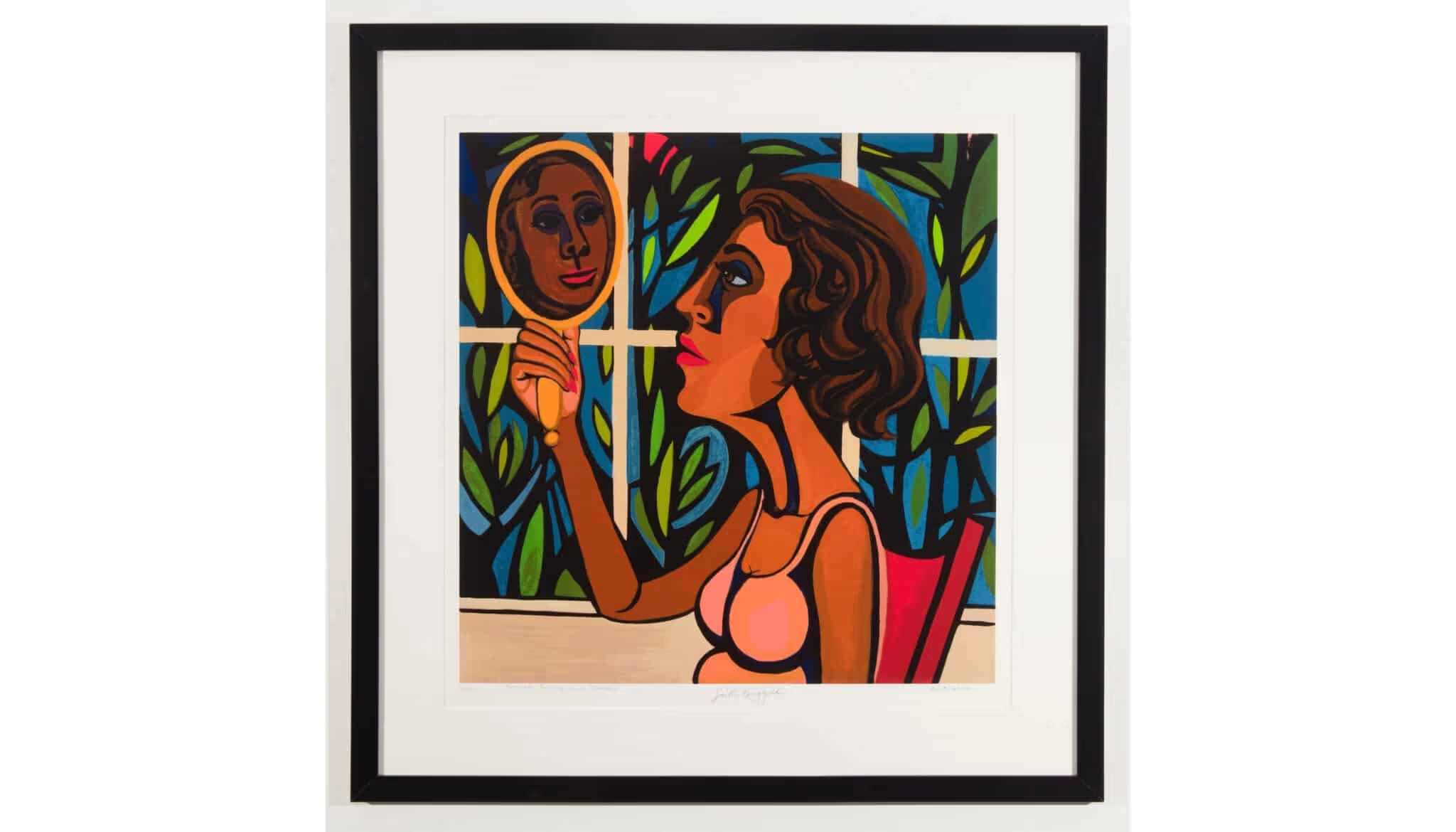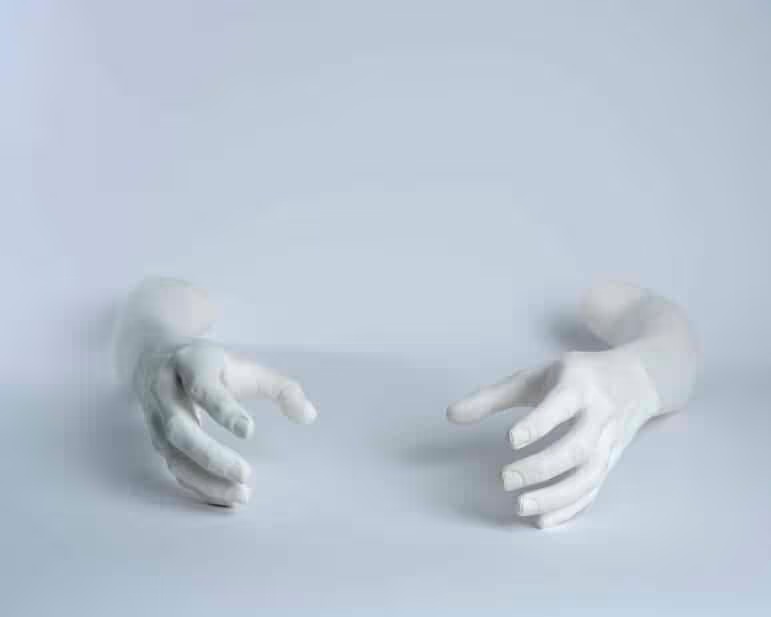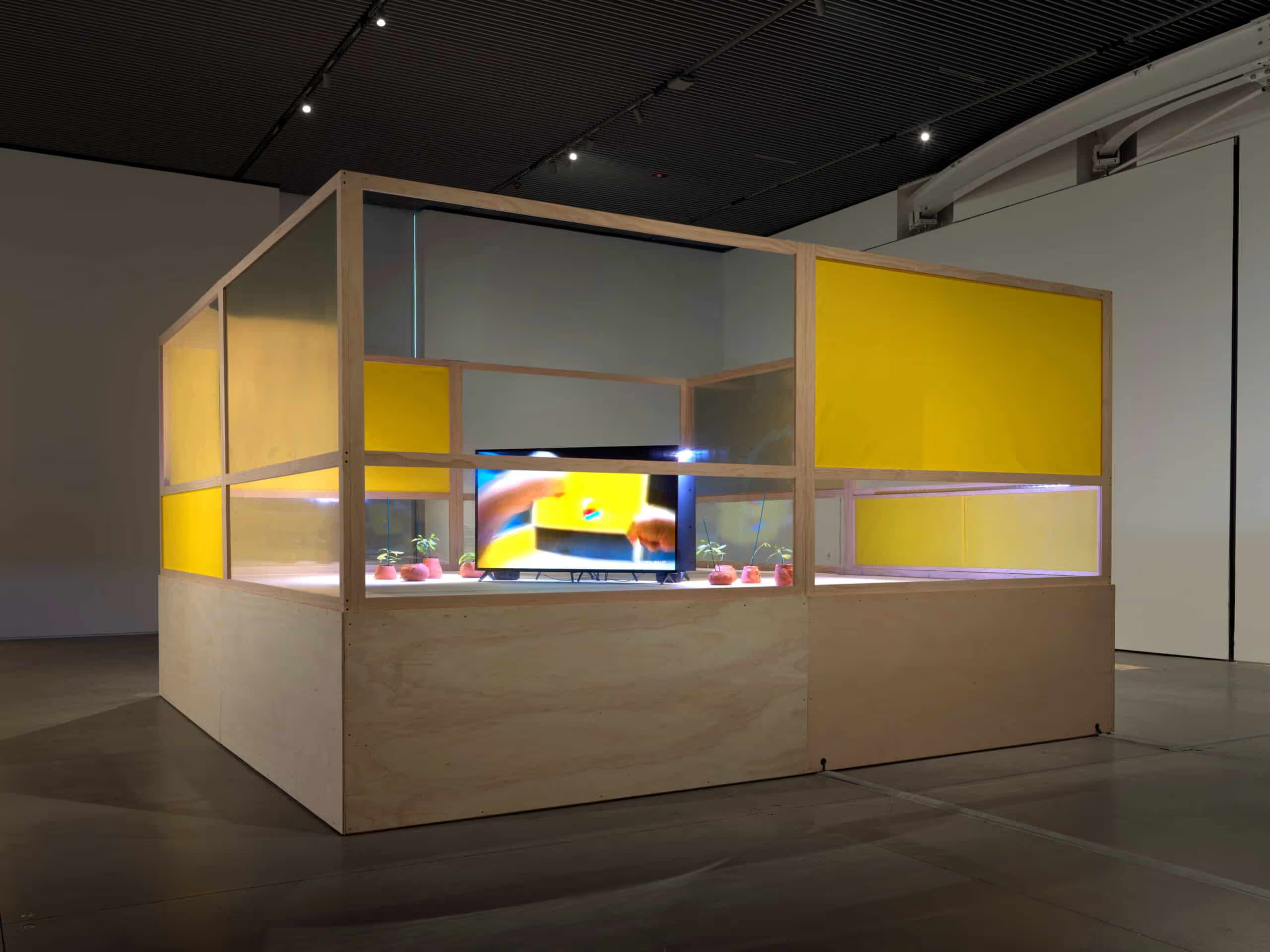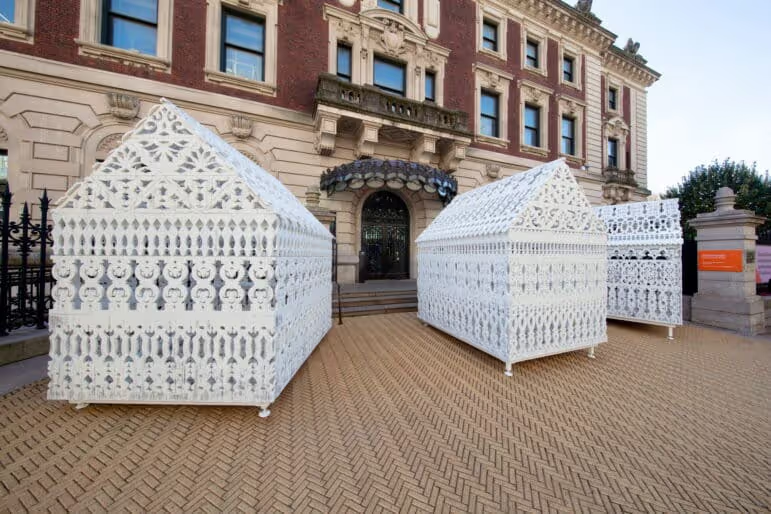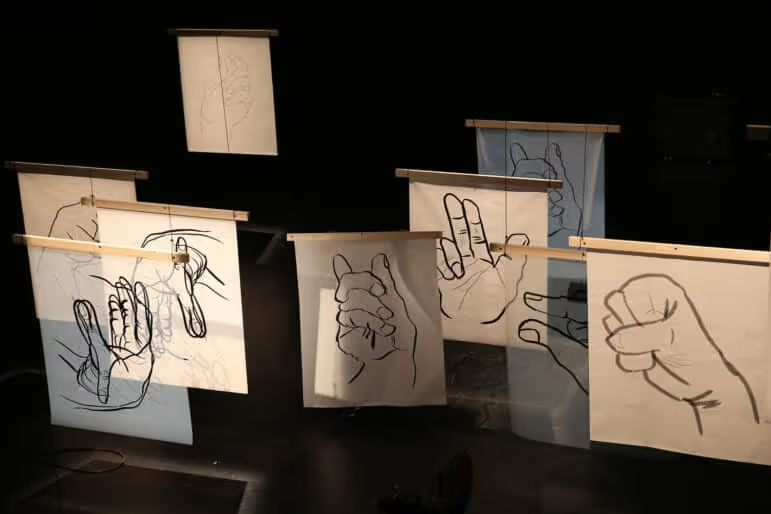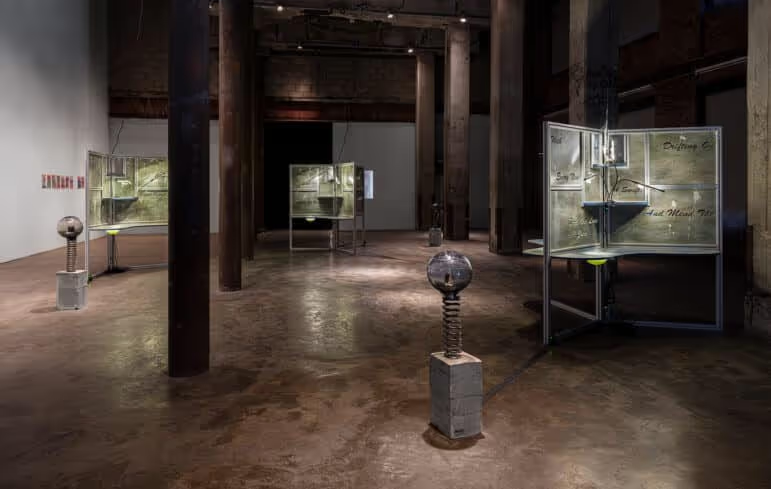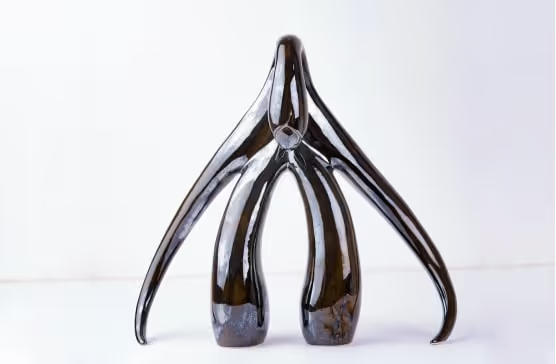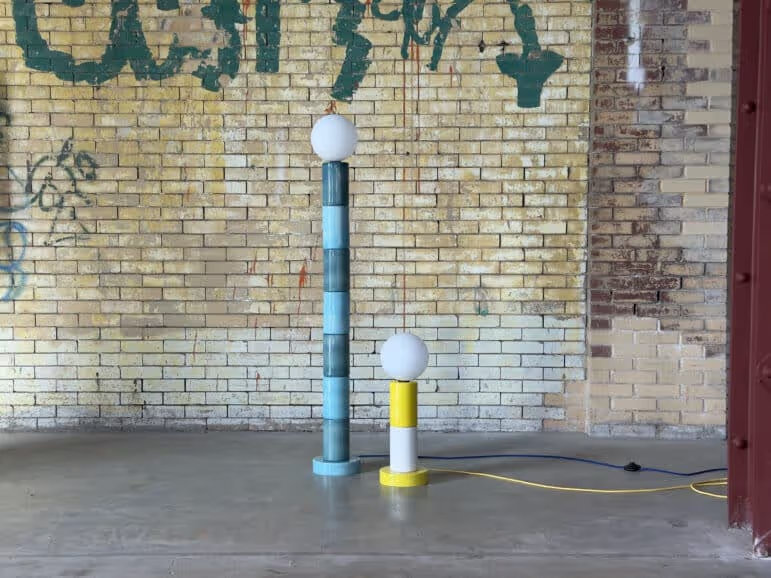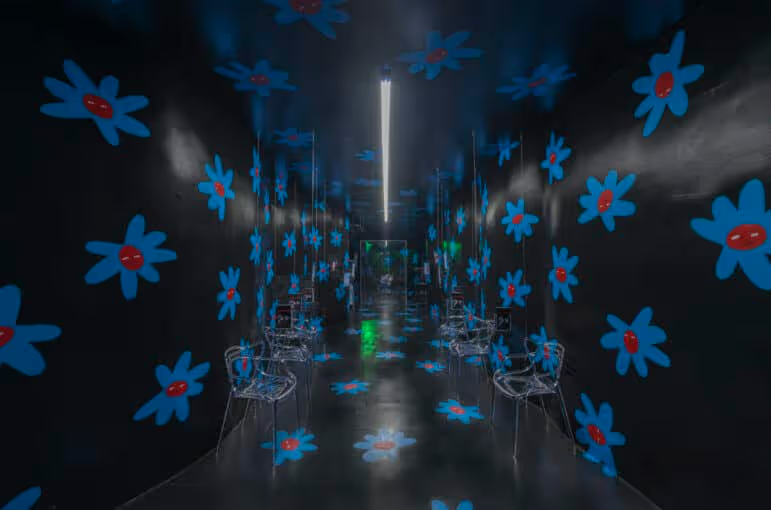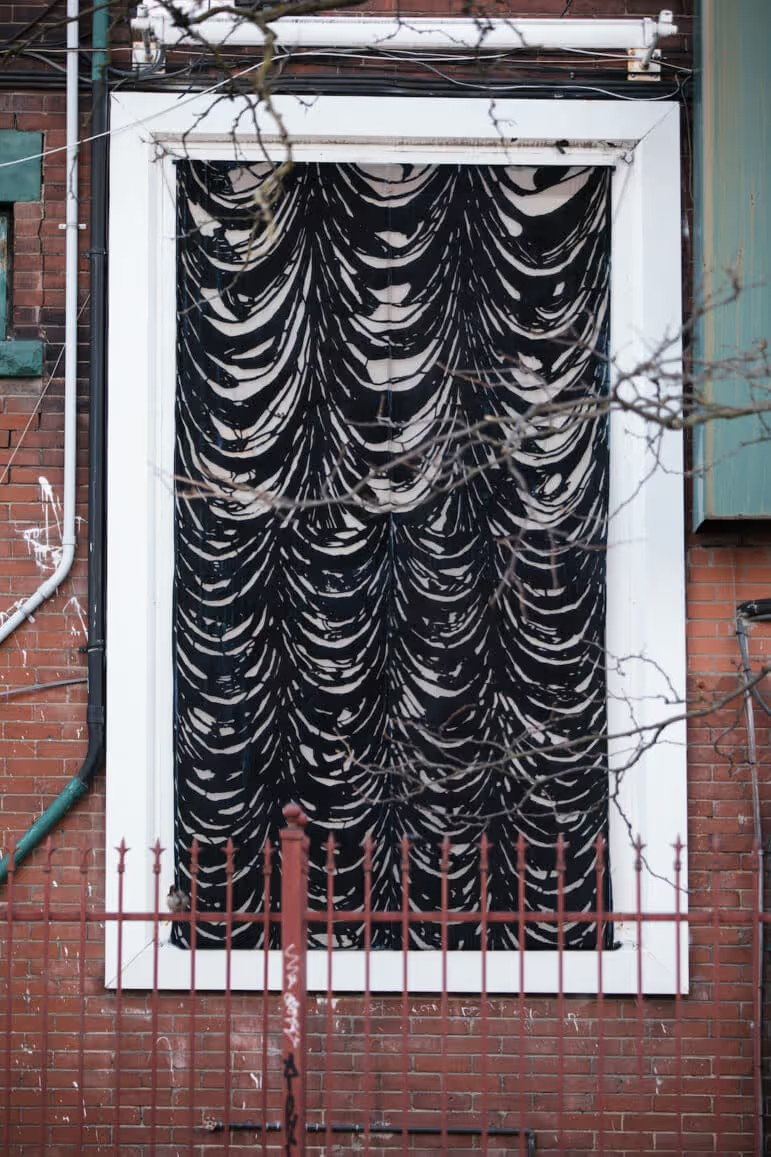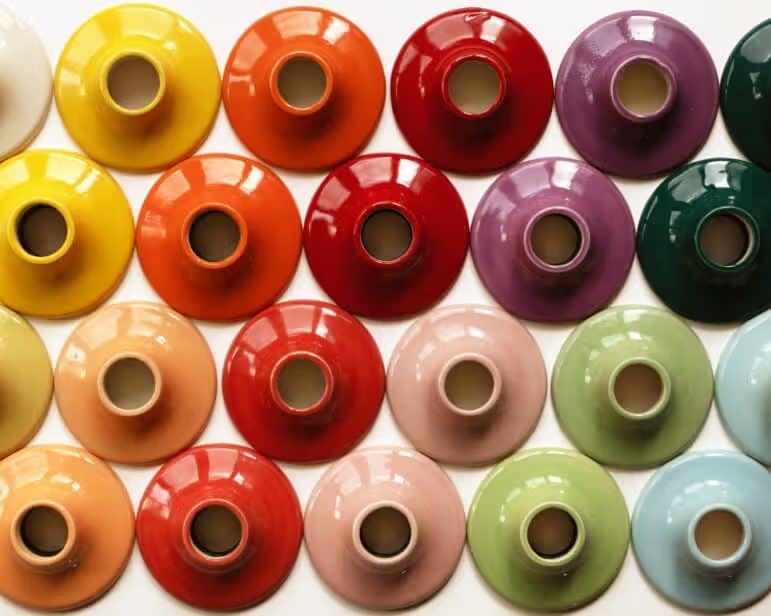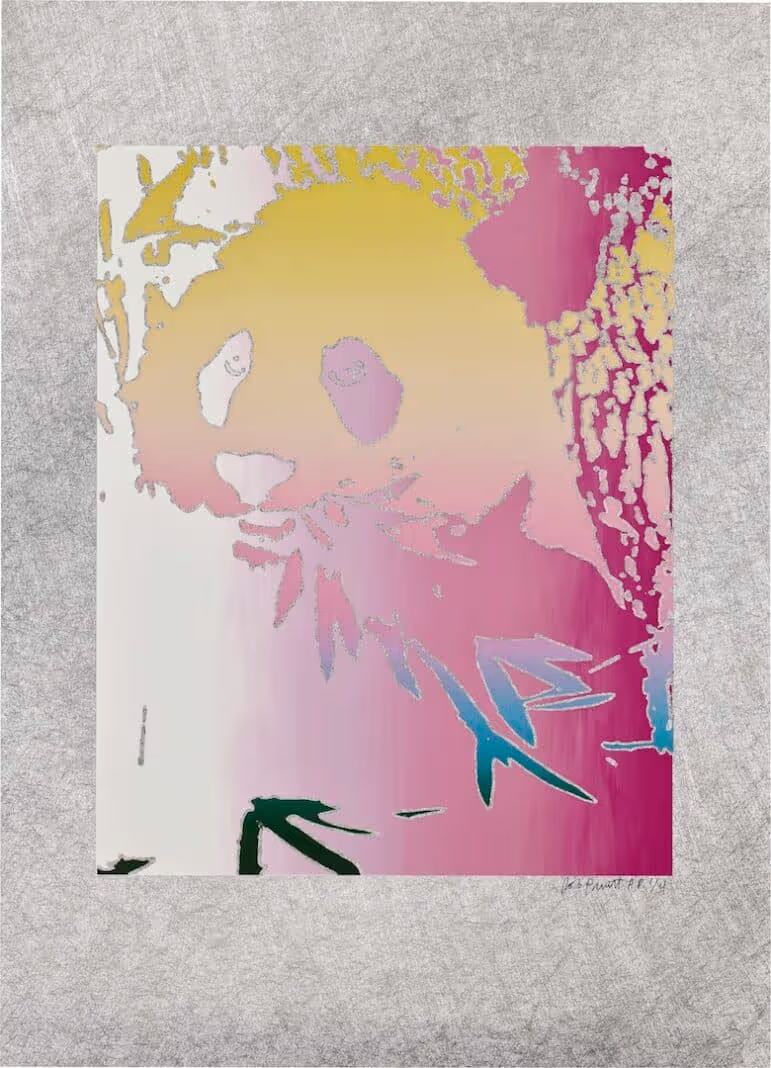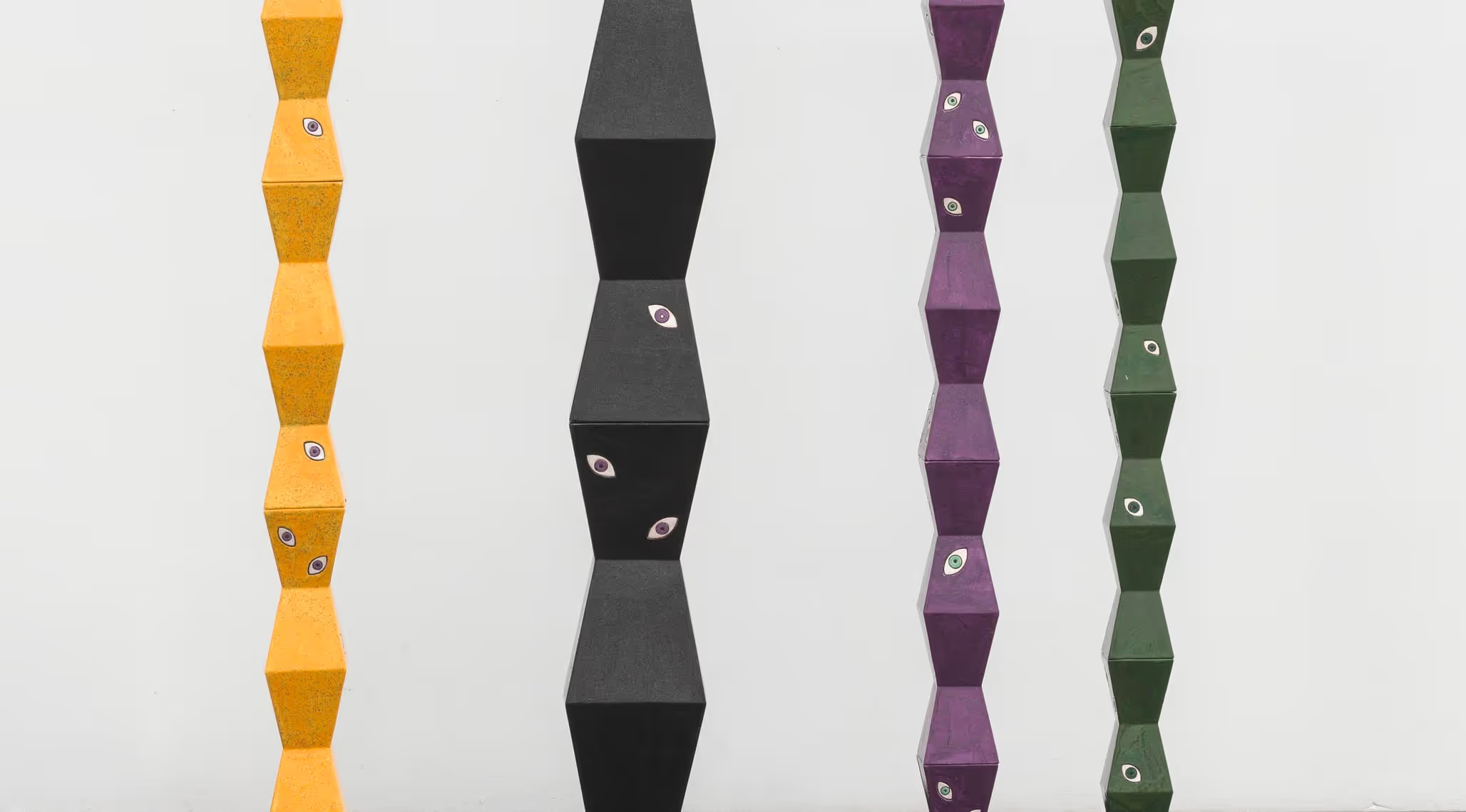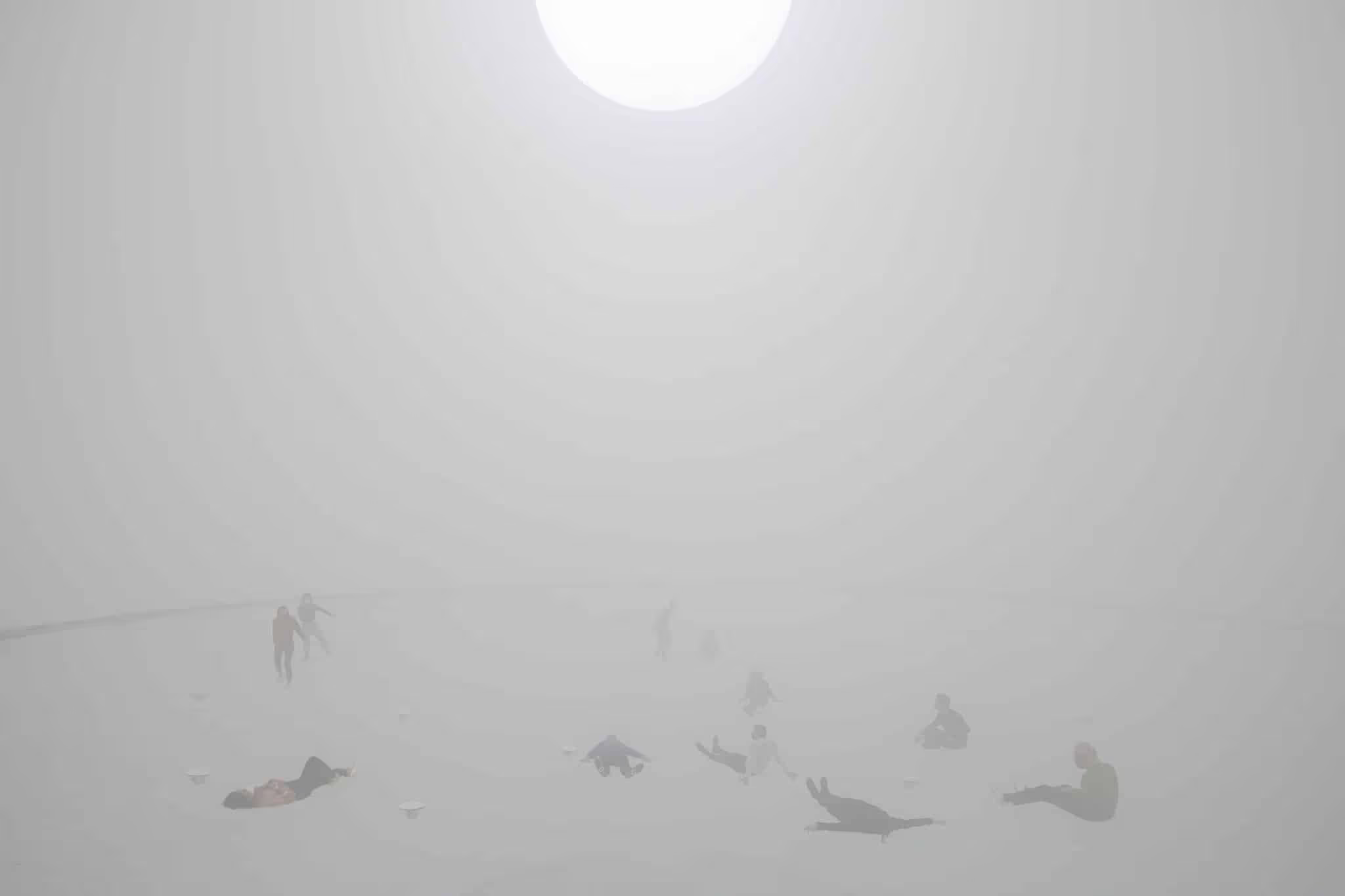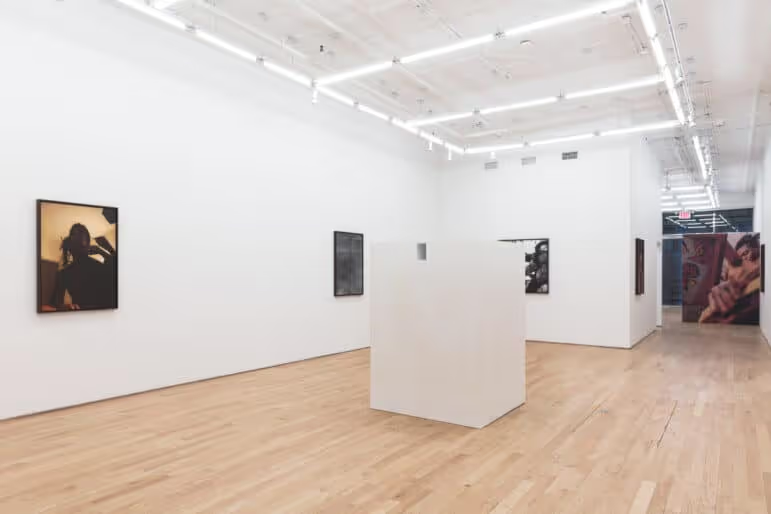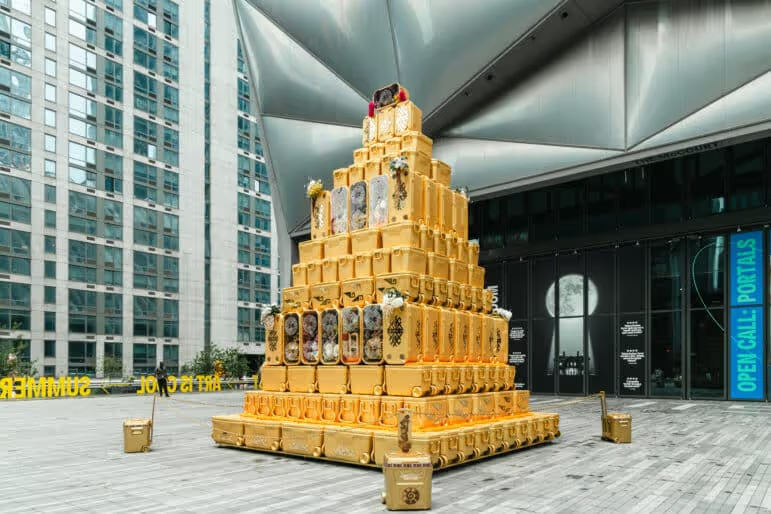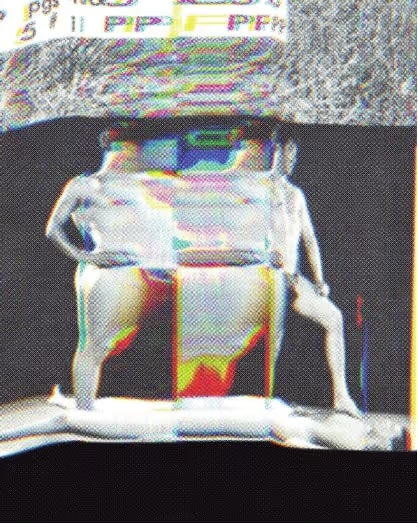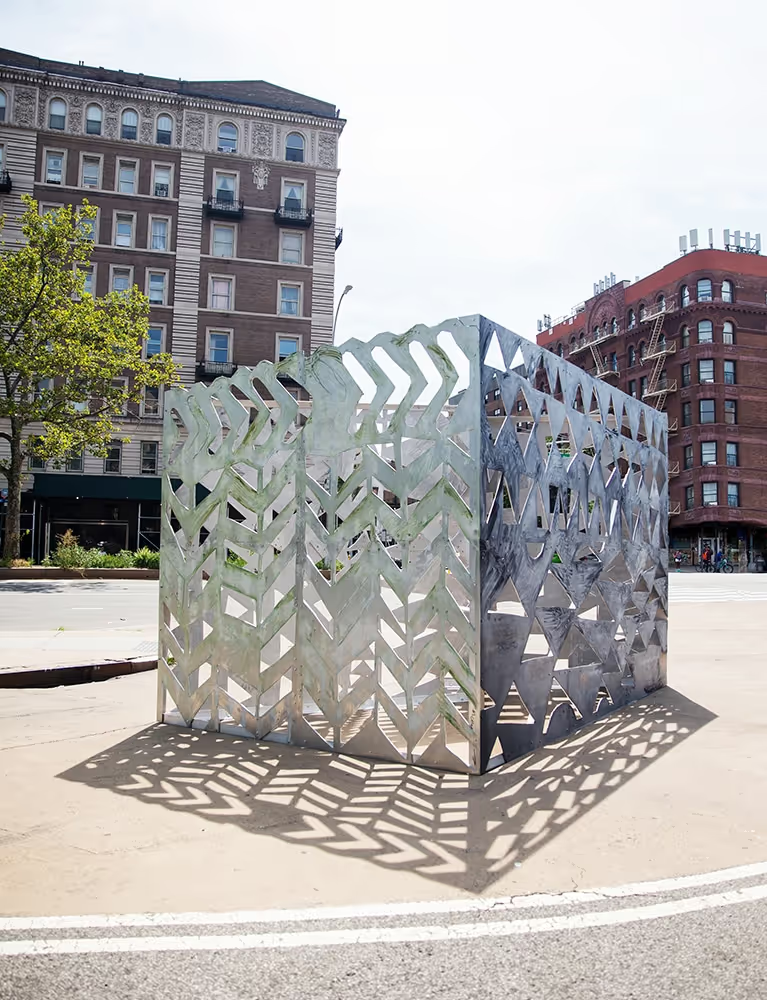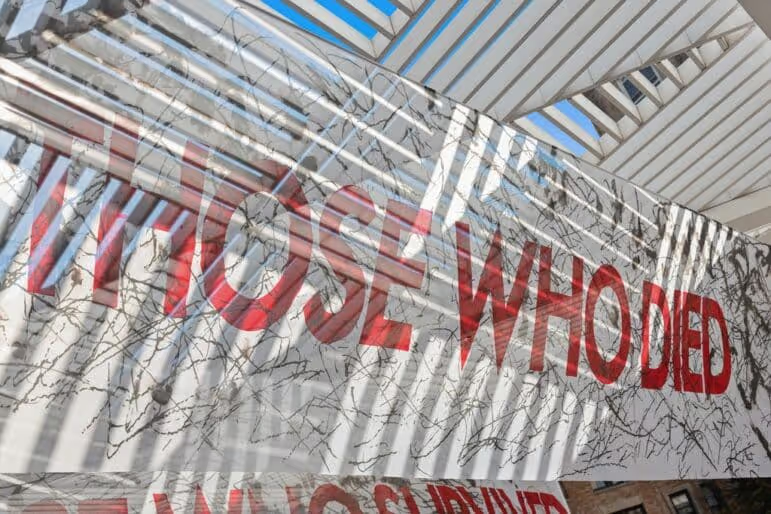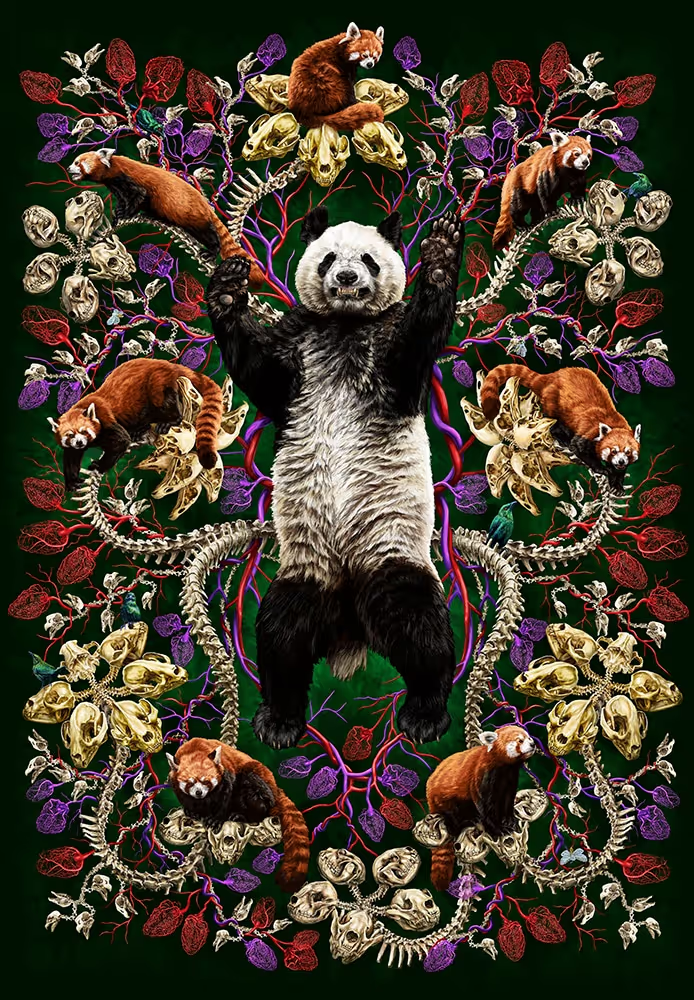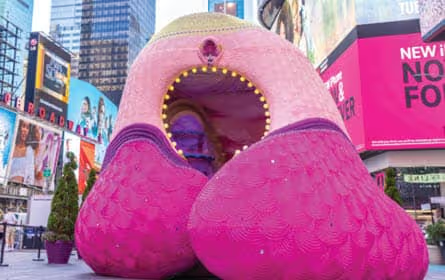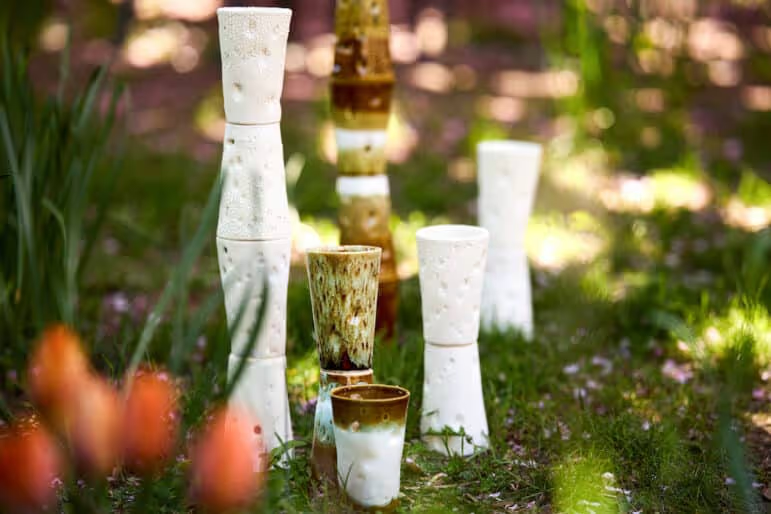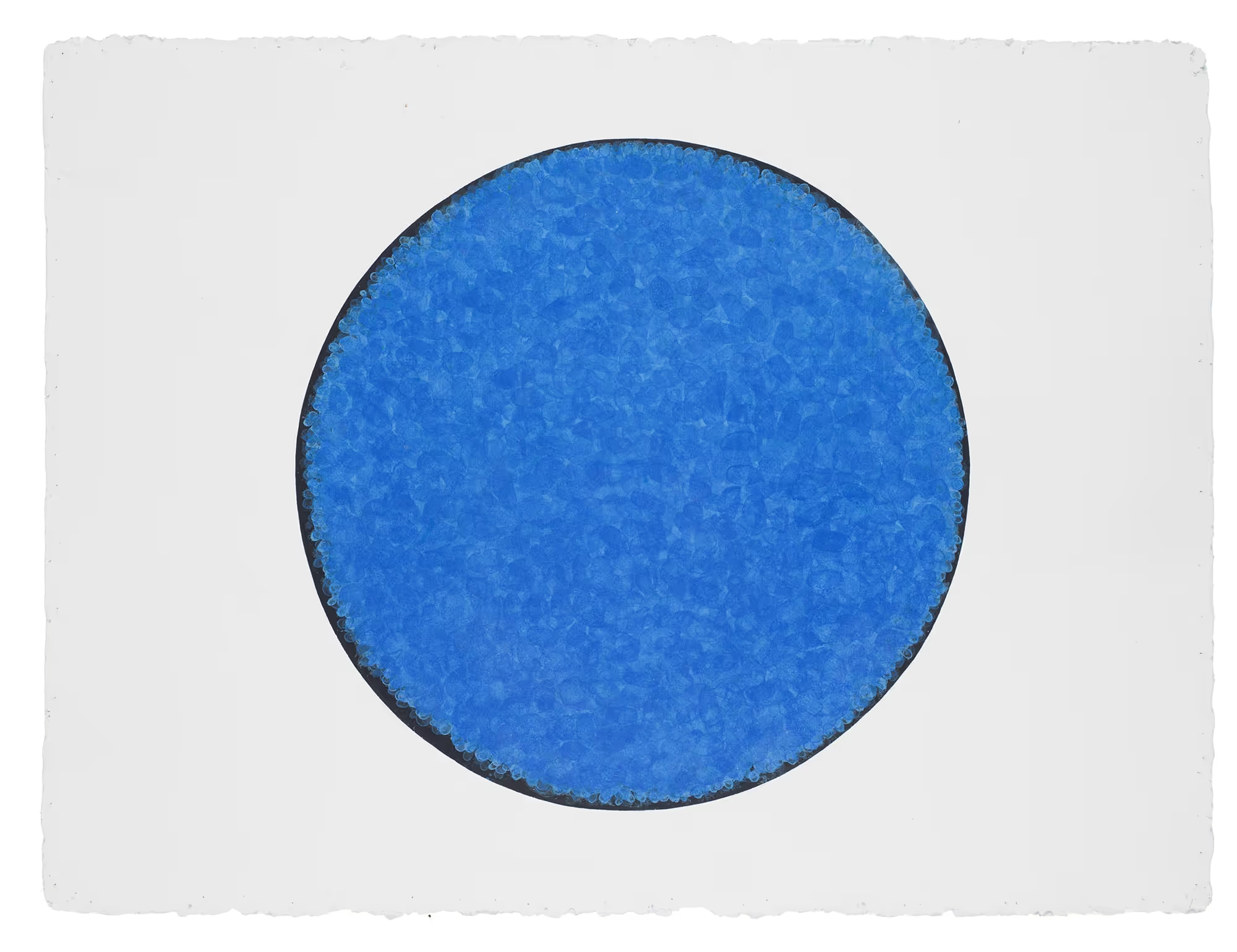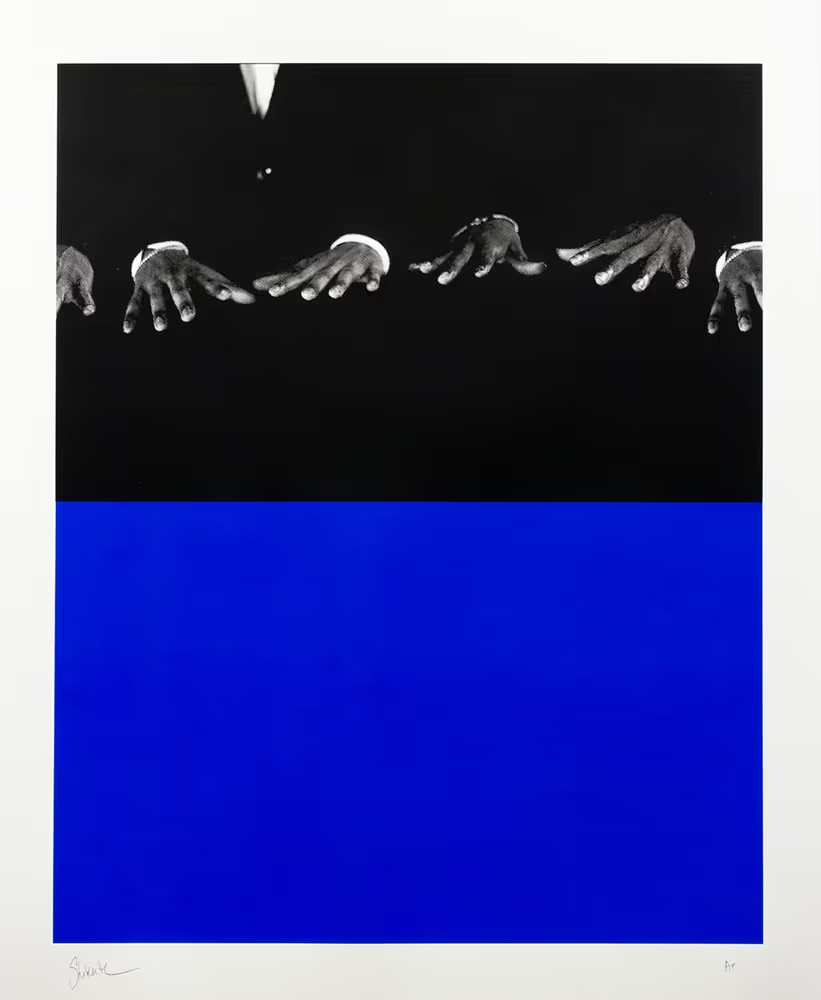
project overview
Artist Liz Collins worked with Powerhouse Arts to create the sculpture Map Key for the exhibition “Wayfinding” at The Addison Gallery of American Art in Andover, Massachusetts. The sculpture is based on a map key that Collins referenced within the Phillips Academy’s Sidney R. Knafel Map Collection, which included European maps, atlases, and documents from 1434 through the 19th century. Map Key is made of wood and papier-mâché, acrylic fabric, wool, silk, screen printed antique linen tablecloth.
Collins approached Powerhouse Arts with a vision for the textile component of the sculpture with both screen printed and tufted elements. Collins co-opted a family heirloom as the base material for the central panel of this artwork—a damask woven linen tablecloth— which is draped between two trees made of papier-mâché—fabricated outside of Powerhouse Arts’ studios by Lulu White. Tufted surfaces are achieved by injecting yarn into a textile ground—repeated plunging of a thick metal needle—to make cut or looped pile textured fields. Conventionally, tufting is done through open weave fabrics specially formulated for the task. Monkscloth and specially woven poly-cotton blends make for a strong but elastic ground for the rigorous process. For Map Key, Collins was interested in tufting through a damask woven table cloth. Named for Damascus, which was a major city on the silk road trade route, damask weaves are commonly produced in a single-color yarn and their intricate patterns featuring fruit, flowers, and paisley are visible because of how the long floats of satin-woven warp and weft threads create different textures in the surface of the cloth. It is a tightly woven and delicate fabric, which would normally not be suitable for such an abusive process as tufting. With a career’s worth of textile experience, Collins was well aware of how this material would reflect the aggression of the tufting process; the piece was intentionally tufted with red yarns protruding from its folds, to evoke blood and gore representing the oppression and violence associated with colonization and the displacement of indigenous peoples.
Collins initially worked with Powerhouse Arts to undergo research and development in order to identify the right ink for the printed design: she instructed that it should be very black, but oughtn’t further impede the tufting process by being too crisp and fragile. After a series of tests, the team resolved to use a specially mixed combination of textile ink and ultra-black screen printing ink. The team then carefully tufted around the printed surface, foregoing the use of electric tufting guns in favor of a handheld rug punching needle, which both allowed them better control to protect the damask and to achieve the deepest shag textures in the piece with long cascades of yarn. They worked as a team of two on opposite sides of the tufting frame to pull the yarn through the delicate, tightly woven fabric.
Collins desired long shaggy texture in some areas (6” to 8” lengths) and ultra-short texture in others. In order to achieve this range of pile heights, the team developed a clever modification to the hand punch needle, limiting the amount it was able to plunge by putting zip ties around the needle shaft. With this, the team achieved a low-profile loop texture. Most of the work was done by hand to ensure preservation of the fine linen.
Map Key was shown alongside Stretched Markers, a silk piece suspended from the ceiling and other framed artworks by Collins presented on the walls of the gallery. The exhibition “Wayfinding” included artwork by six other artists who responded to the maps and documents by the Knafel Collection. The exhibition ran from October 17, 2020 to February 28, 2021.
artist biography
Liz Collins is well-known for pushing the boundaries of art and design in innovative and experimental work in fabric, yarn, and other materials and techniques associated with textile media. Although she embraces a language of abstraction, bold colors, patterns, and symbols allude to queer and feminist references, sourcing further inspiration from interpersonal and environmental forces such as electricity, volatility, connectivity, and energy exchange.
Whether in the form of textile, painting, drawing or installation, Collins frequently explores the dichotomy of structure and entropy–qualities inherent to textile that speak to the fissures present in broader architectural, political, and social structures. Processes of slowly cutting, unbinding, revealing, and rearranging subtly nod to the destabilization that takes place when small but organized acts aim to undercut rigid systems.
Currently on view at the RISD Museum in Providence, RI is Motherlode, a mid-career retrospective of Collins’s work curated by Kate Irvin. The exhibition is accompanied by a monograph published by Himmer and edited by Irvin, with additional essays, interviews, and contributions from Glenn Adamson, Octavia Bürgel, Julia Bryan-Wilson, Zoe Latta, and Eileen Myles. Other recent museum exhibitions include Woven Histories: Textiles and Modern Abstraction, curated by Lynne Cooke and presented at the Los Angeles County Museum of Art; the National Gallery of Art, Washington, DC; the National Gallery of Canada, Ottawa, ON; and the Museum of Modern Art, New York. Collins’s work was also featured in a field of bloom and hum, curated by Ian Berry at the Tang Teaching Museum in Saratoga Springs, NY.
Collins has been the subject of solo exhibitions at CANDICE MADEY, New York (2024), Rossana Orlandi, Milan (2024, 2019); Touchstones Rochdale, UK (2022); AMP, Provincetown, MA (2020); the Museum of Arts and Design, New York (2018); the Tang Teaching Museum, Saratoga Springs, NY (2015); the Knoxville Museum of Art, TN (2005), among others. She has been featured in group exhibitions at the Museum of Modern Art, New York (2025); the National Gallery of Canada, Ottawa, ON (2024); the Venice Biennale, IT (2024); the National Gallery of Art, Washington (2024); the Los Angeles County Museum of Art (2023); the Addison Gallery of American Art, Andover, MA (2023, 2020); Longhouse Reserve, East Hampton, NY (2023); the Lyndhurst Mansion, Tarrytown, NY (2022); the Leslie-Lohman Museum of Art, New York (2021, 2017, 2014); the Drawing Center, New York, NY (2019, 2018); BRIC, Brooklyn, NY (2019); Smack Mellon, Brooklyn, NY (2019); the New Museum, New York (2017); the Museum at FIT, New York (2013); the Los Angeles Municipal Art Gallery (2015); and the Institute of Contemporary Art, Boston (2011).
Collins’s honors include an Anonymous Was A Woman Fellowship, a USA Fellowship, a MacColl Johnson Fellowship, Foundation for Contemporary Arts & Artist Relief grants, Drawing Center Open Sessions and residencies at Civitella Ranieri, Siena Art Institute, MacDowell, Yaddo, Haystack, Museum of Arts and Design, Stoneleaf, and currently she is in the Two Trees Cultural Subsidy Studio Program in Brooklyn. In 2020, The Tang Museum released “Liz Collins Energy Field”, her first major publication.
Collins lives and works in Brooklyn, NY. She received her BFA and MFA in Textiles from the Rhode Island School of Design.
